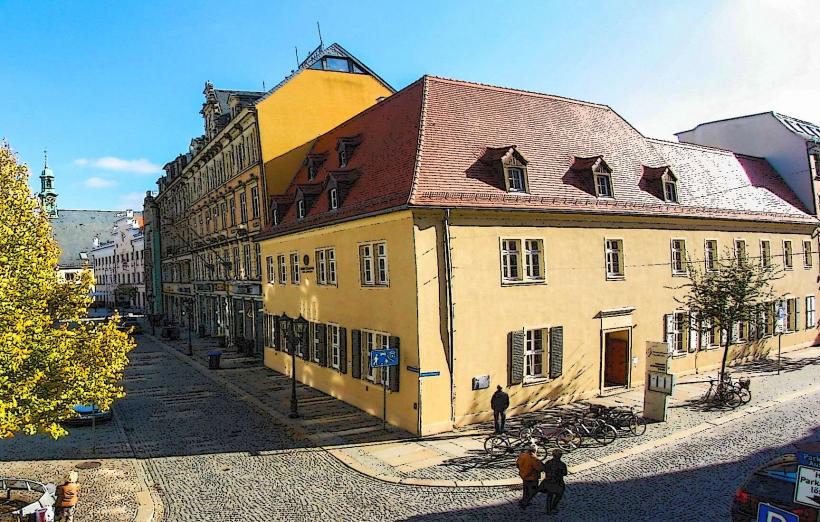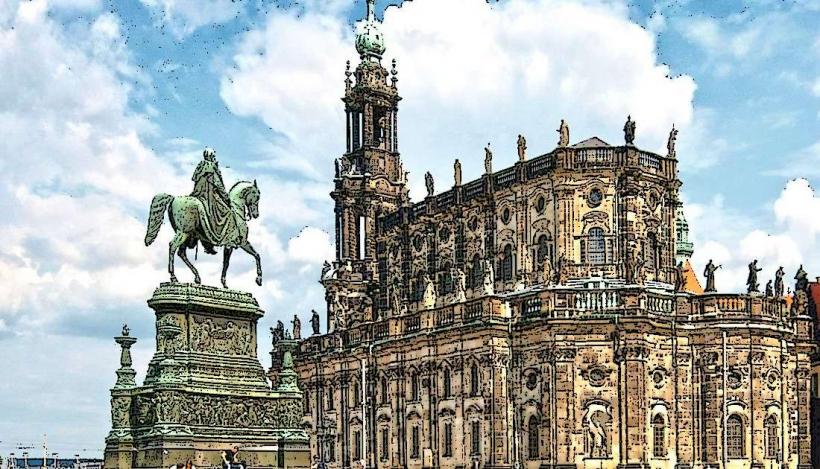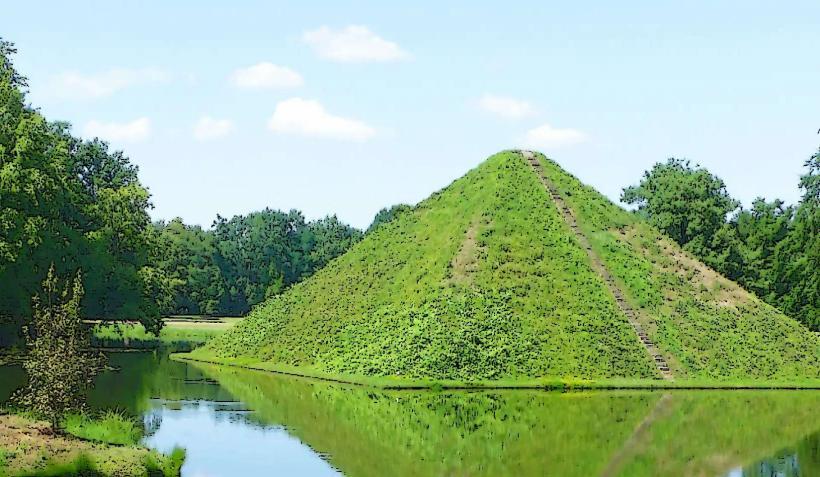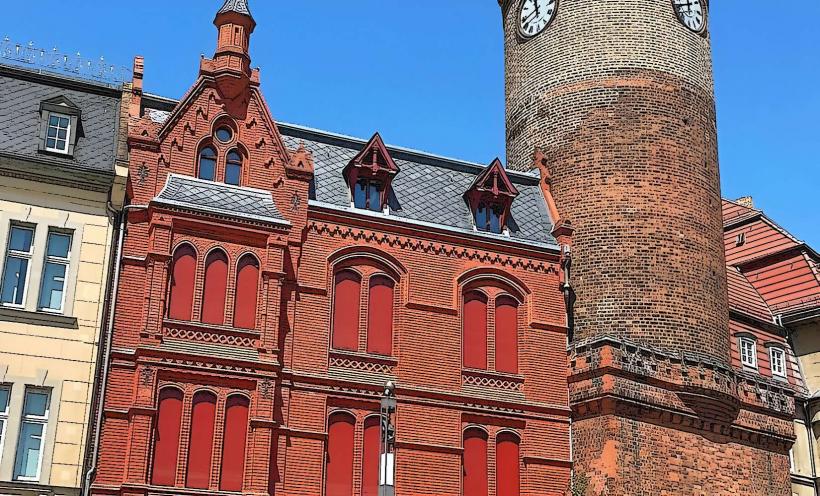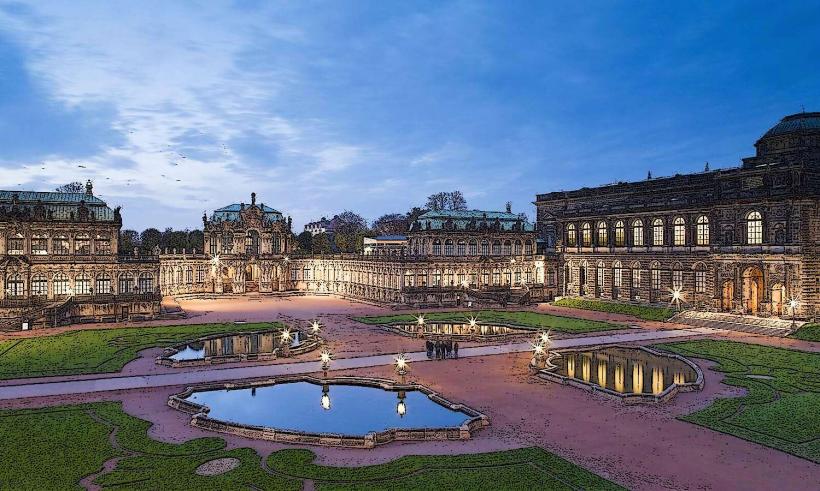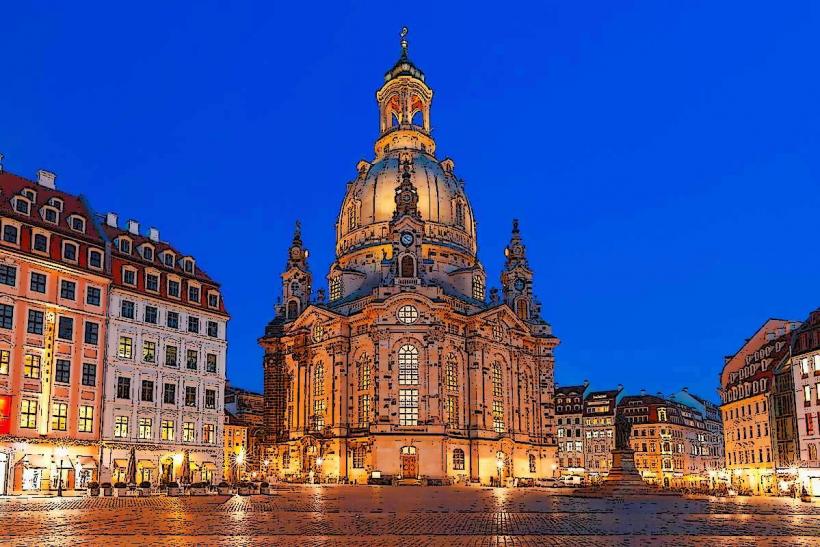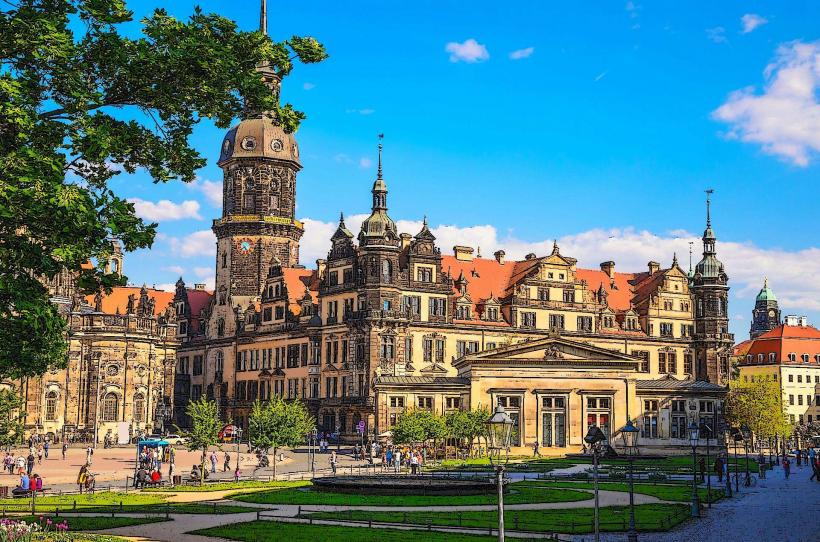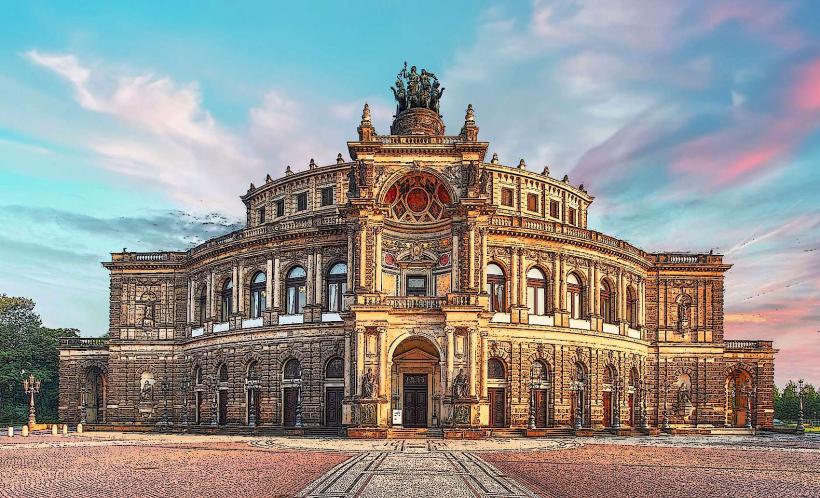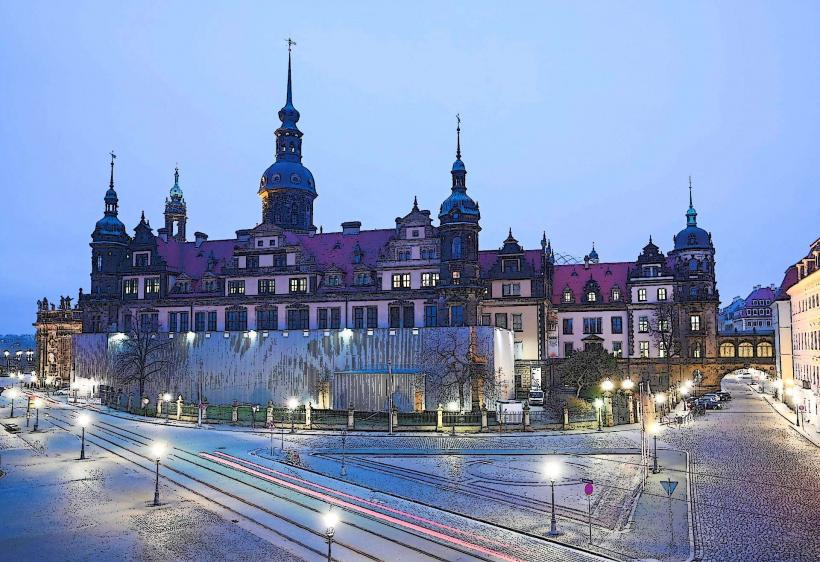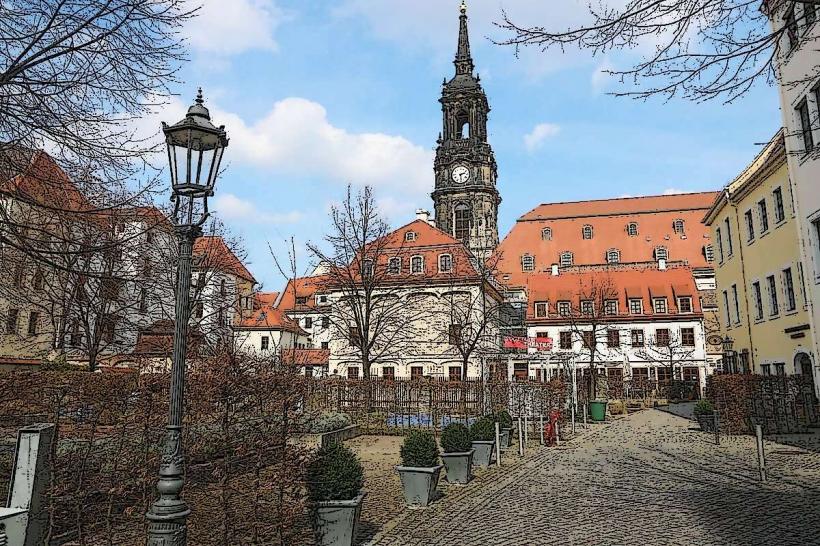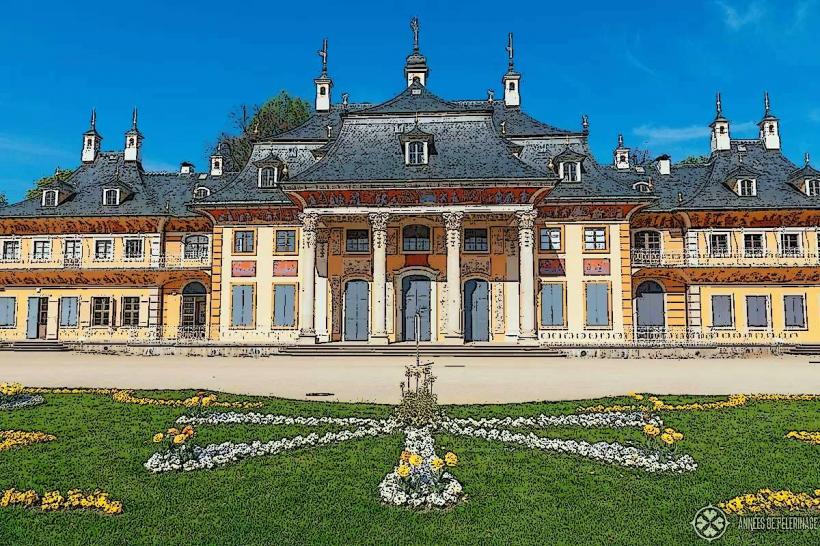Information
Landmark: Bruhlsche TerrasseCity: Dresden
Country: Germany
Continent: Europe
The Brühlsche Terrasse (Brühl's Terrace), often called the "Balcony of Europe," is a scenic promenade in Dresden, Germany, that stretches along the Elbe River. This iconic spot is rich in history, architectural beauty, and offers stunning views of the river and Dresden’s historic landmarks. It has been a gathering place for locals and tourists alike, providing a mix of natural beauty, artistic inspiration, and cultural heritage.
Historical Background
Origins: Originally part of Dresden’s fortifications, the terrace was built as a defensive wall in the 16th century. The Saxon Elector Maurice of Saxony commissioned the fortifications, which later evolved into a civilian space as Dresden grew and developed beyond its medieval layout.
Transformation by Count Brühl: In the 18th century, the terrace was converted into a garden and open space by Heinrich von Brühl, the Saxon prime minister. Brühl transformed the former fortifications into a grand promenade with gardens and statues. This redesign included the construction of elegant buildings and residences, which established the terrace as a prestigious location in Dresden.
Opening to the Public: After Brühl’s death, the terrace remained private until it was opened to the public in 1814. Since then, it has been accessible for everyone to enjoy, adding to its reputation as a beloved Dresden landmark.
Architectural Highlights
Schinkelwache Pavilion: A Neoclassical pavilion designed by Karl Friedrich Schinkel, the Schinkelwache serves as an entrance to the terrace from the Theaterplatz square. It’s one of the oldest and most recognized buildings on the terrace.
Academy of Fine Arts: Located on the terrace, this building is known for its glass dome, called the “lemon squeezer.” It was constructed in the late 19th century and adds to the architectural variety of the terrace. The dome’s intricate design reflects the importance of Dresden as a city of arts and culture.
Saxon State Chancellery: Another noteworthy building on Brühl's Terrace, the Saxon State Chancellery, represents Dresden's historical political significance. This structure has a Renaissance Revival style, contrasting with the other Neoclassical and Baroque elements in the area.
Notable Monuments and Statues
Johann Friedrich Böttger Monument: A monument dedicated to Johann Friedrich Böttger, who is credited with inventing European porcelain, a discovery that spurred the establishment of the famous Meissen porcelain works. The statue symbolizes Dresden’s contributions to art and craftsmanship.
Monument to Gottfried Semper: A bronze statue honoring Gottfried Semper, the architect responsible for many of Dresden's prominent buildings, including the Semper Opera House. This monument highlights Semper's influence on Dresden’s architectural landscape.
Caspar David Friedrich Monument: Located on the terrace, this monument pays homage to the Romantic painter Caspar David Friedrich, who often painted the Dresden skyline and was inspired by the city’s landscapes. His artwork is a significant part of German Romanticism, with Brühl's Terrace serving as a frequent subject.
Experience and Atmosphere
Views and Scenery: The terrace offers panoramic views of the Elbe River, the Augustus Bridge, and the cityscape beyond. The promenade is lined with benches, flower beds, and carefully manicured greenery, providing a peaceful space for a stroll or a rest with a view.
Pathways and Access: The terrace has a long, spacious walkway, ideal for leisurely walks and photographs. Staircases and ramps make it accessible from both the riverside and the nearby Old Town.
Nighttime Beauty: Illuminated at night, Brühl’s Terrace becomes even more magical. The lights cast a warm glow over the river and create beautiful reflections, enhancing the view and making it a romantic destination for evening strolls.
Events and Cultural Significance
Seasonal Events: Brühl's Terrace is often used for public events, including festivals, concerts, and art exhibitions. During major city festivals, the terrace becomes a hub of activity, blending its historic ambiance with contemporary events.
Artist Inspiration: The terrace has inspired countless artists, writers, and musicians throughout history. Its charm and views have made it a muse for many, leading to it being featured in various works of German art, literature, and music.
Local Gathering Spot: Beyond its significance to tourists, the terrace is a beloved gathering spot for locals, who come here to relax, socialize, or enjoy the sunset. The historical and aesthetic value of Brühl's Terrace has made it an integral part of Dresden's community life.
Visitor Tips
Ideal Time to Visit: Brühl’s Terrace can be enjoyed year-round, though spring and summer provide the best experience due to blooming flowers and lush green surroundings. Sunrise and sunset are particularly stunning, as the light enhances the scenic beauty and provides excellent photo opportunities.
Nearby Attractions: Brühl’s Terrace is close to many other Dresden landmarks, including the Frauenkirche, Dresden Castle, and Zwinger Palace. This makes it easy to include as part of a larger exploration of Dresden’s historic center.
Accessibility: The terrace has been made accessible for those with mobility challenges, with ramps and easy paths for wheelchairs and strollers.
Conclusion
Brühl's Terrace combines history, art, and natural beauty, making it a timeless attraction in Dresden. Its transformation from a military fortification to a cherished public space reflects Dresden's evolution as a cultural center and adds to the terrace's allure as one of the city’s must-visit spots. For locals and visitors alike, Brühl’s Terrace offers a blend of history, beauty, and tranquility that captures the essence of Dresden’s charm.

